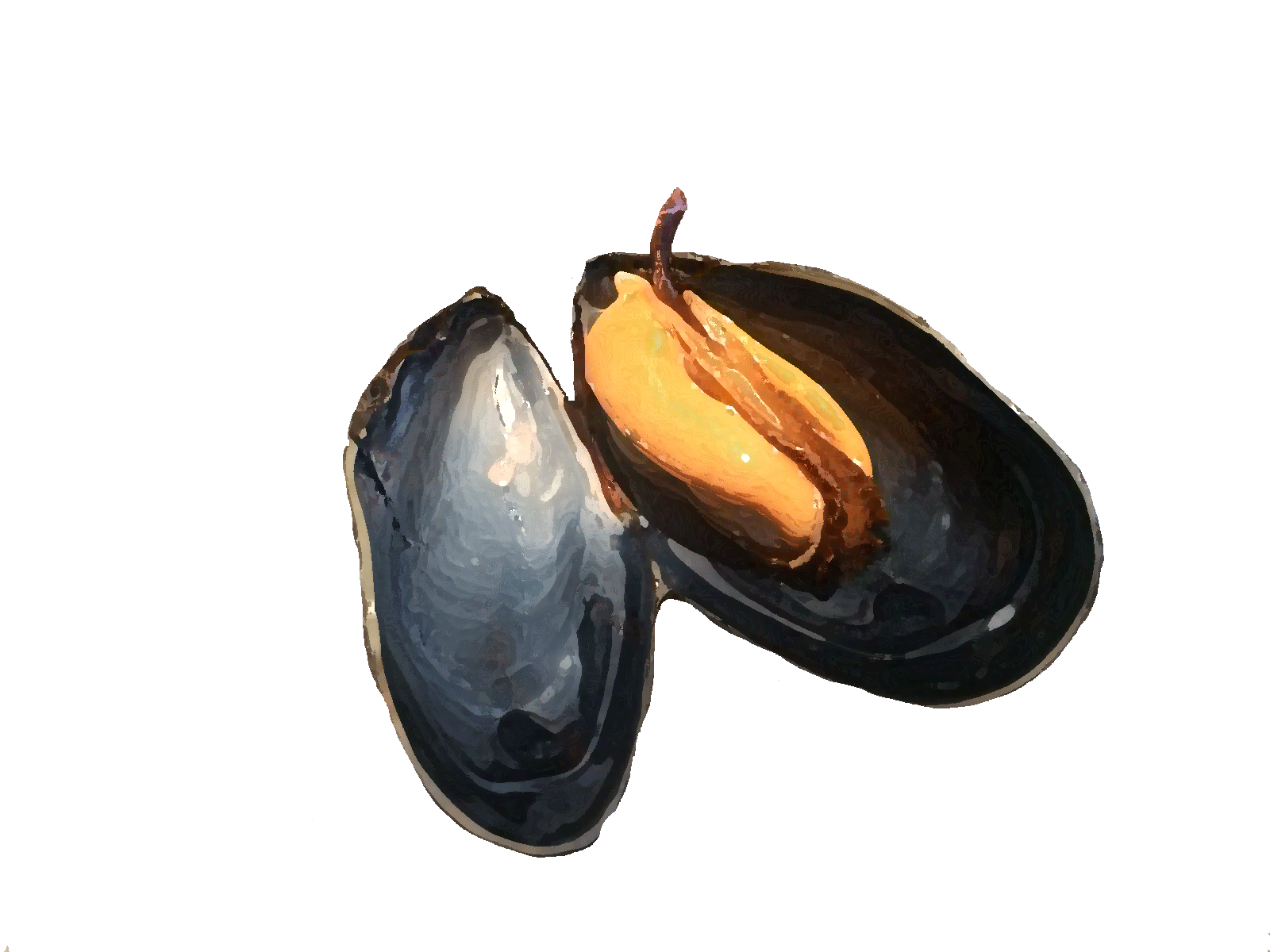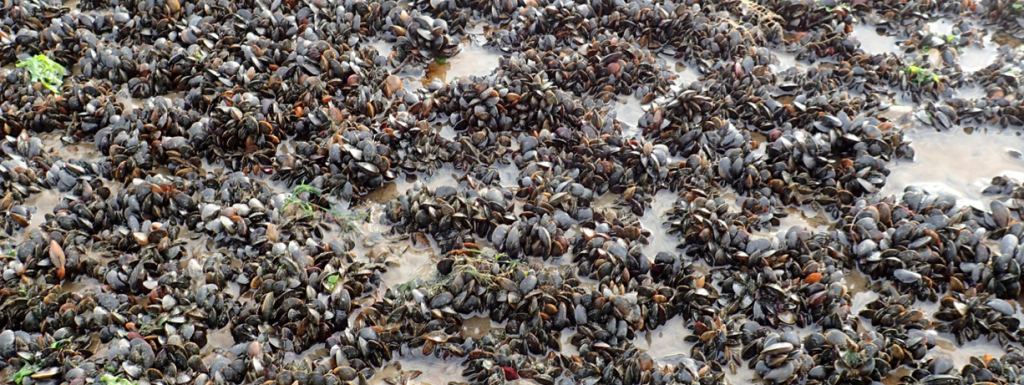Mussel growth, both in shell length and flesh weight, depends largely on the amount and quality of food ingested. In addition to food quality and quantity, water temperature, salinity, current velocity and wave action, mussel size and age, and competition between mussels and other (shell) animals or the presence of barnacles on the shell also play a role. The tidal range may also affect mussel growth. This is because the duration of dryness determines the time a mussel can extract food from the water and thus the growth rate. This is also why mussels in the littoral, i.e., on tidal flats, tend to be smaller than mussels in the sublittoral. The relationship between shell length and meat weight depends on food availability; well-fed, fast-growing mussels have a high ratio in meat weight to shell length. The longitudinal growth of the clam shell occurs mainly during the months of April through August. During these months, food availability, the concentration of algae in the water, is highest. Energy for maintenance and growth increase exponentially as temperature increases. The body weight of mussels decreases again after summer, mainly due to decrease in food availability. Weight loss from August can even reach 50% in winter. Also during the repreduction period, the flesh weight of mussels may decrease because much energy goes to the production of egg and sperm cells that mussels.
Energy management
Energy from food is used primarily for maintenance and then for growth. Mussels use the energy derived from food to increase in flesh and shell weight, as well as to produce sex cells and byssus threads. Where Mussels put their energy depends on the environment and the season. In fact, mussels need that energy to adapt to the environment. Mussels on tidal mudflats, for example, are more affected by wave action than submerged mussels and are more invested in developing a thick shell and byssus threads. Mussels living under high predation pressure, on the other hand, will again invest more in a thicker shell. The weight of the mussels’ flesh is highest in July-August, after which it gradually decreases. In the fall and winter, the weight then decreases dramatically immediately after the release of eggs and sperm. The meat weight can drop from 35% by weight to 15%. In the process, the shell remains the same size.
What can cause growth rates to differ between years?
There can be large differences between years in the growth rate and survival of young mussels. One year’s shell length may increase twice as fast as the next. Such differences may of course be related to food availability, which can also show large annual fluctuations. But there is also evidence that there may be a relationship between growth rate after settlement and the amount of food a mussel had available to it as a larva (Phillips 2002). Laboratory studies show that larvae, which were offered plenty of food, were larger at the time of settlement and grew faster after settlement. Even after several weeks, they continued to grow faster, regardless of the amount of food then available. One explanation for this could be that the better-fed larvae have more energy to settle and the metamorphosis from larva to mussel seed passes better. Immediately after establishment, the larvae undergo metamorphosis in which the gills are developed. The gills are important organs for taking in food and oxygen. The well-fed larvae might have more reserves to develop a larger gill surface area. Having a long shell and a larger gill surface area has the advantage that the mussel can filter more food from the water. However, these results have only been found in a laboratory setup and have not yet been verified in the field.


